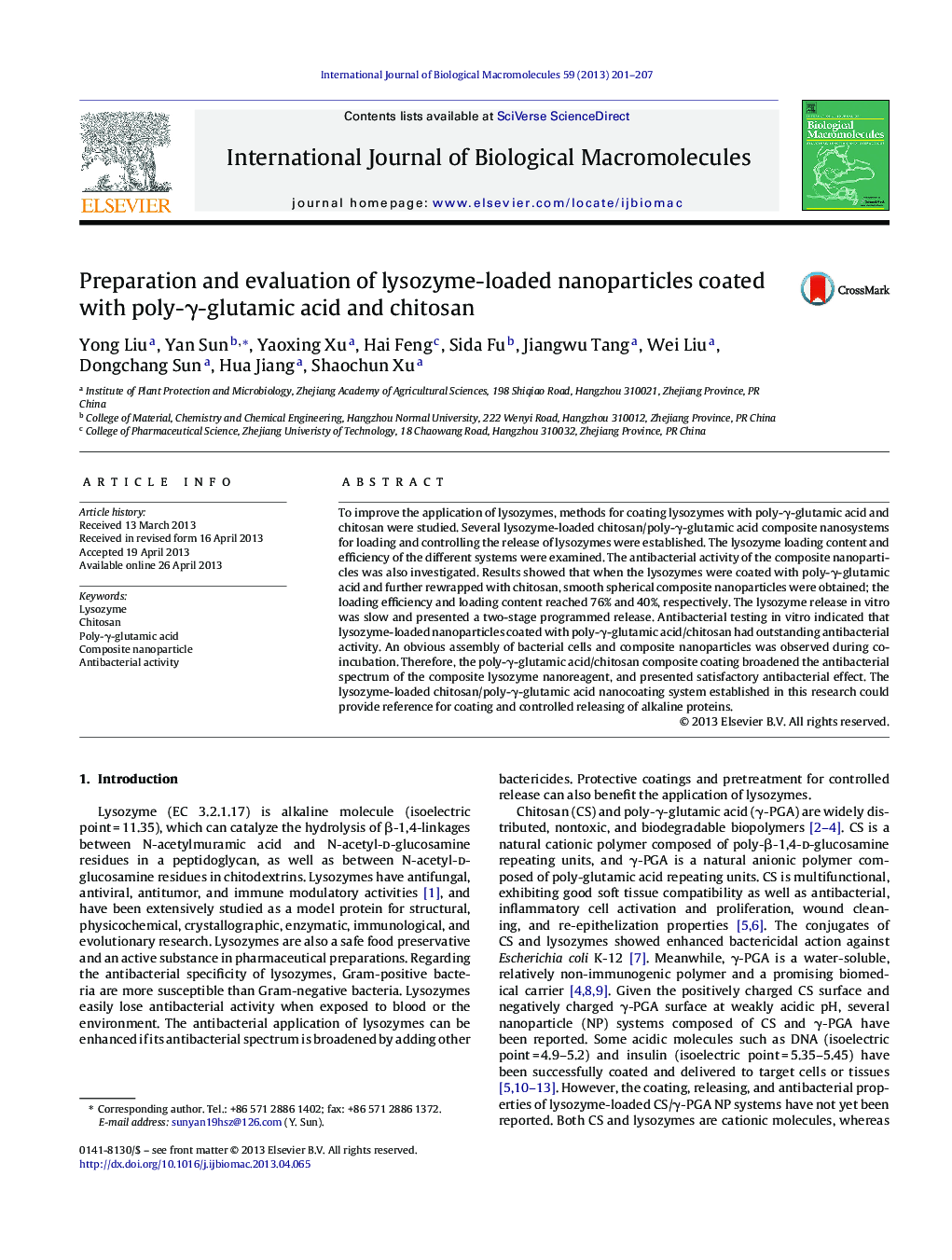| Article ID | Journal | Published Year | Pages | File Type |
|---|---|---|---|---|
| 8333548 | International Journal of Biological Macromolecules | 2013 | 7 Pages |
Abstract
To improve the application of lysozymes, methods for coating lysozymes with poly-γ-glutamic acid and chitosan were studied. Several lysozyme-loaded chitosan/poly-γ-glutamic acid composite nanosystems for loading and controlling the release of lysozymes were established. The lysozyme loading content and efficiency of the different systems were examined. The antibacterial activity of the composite nanoparticles was also investigated. Results showed that when the lysozymes were coated with poly-γ-glutamic acid and further rewrapped with chitosan, smooth spherical composite nanoparticles were obtained; the loading efficiency and loading content reached 76% and 40%, respectively. The lysozyme release in vitro was slow and presented a two-stage programmed release. Antibacterial testing in vitro indicated that lysozyme-loaded nanoparticles coated with poly-γ-glutamic acid/chitosan had outstanding antibacterial activity. An obvious assembly of bacterial cells and composite nanoparticles was observed during co-incubation. Therefore, the poly-γ-glutamic acid/chitosan composite coating broadened the antibacterial spectrum of the composite lysozyme nanoreagent, and presented satisfactory antibacterial effect. The lysozyme-loaded chitosan/poly-γ-glutamic acid nanocoating system established in this research could provide reference for coating and controlled releasing of alkaline proteins.
Related Topics
Life Sciences
Biochemistry, Genetics and Molecular Biology
Biochemistry
Authors
Yong Liu, Yan Sun, Yaoxing Xu, Hai Feng, Sida Fu, Jiangwu Tang, Wei Liu, Dongchang Sun, Hua Jiang, Shaochun Xu,
